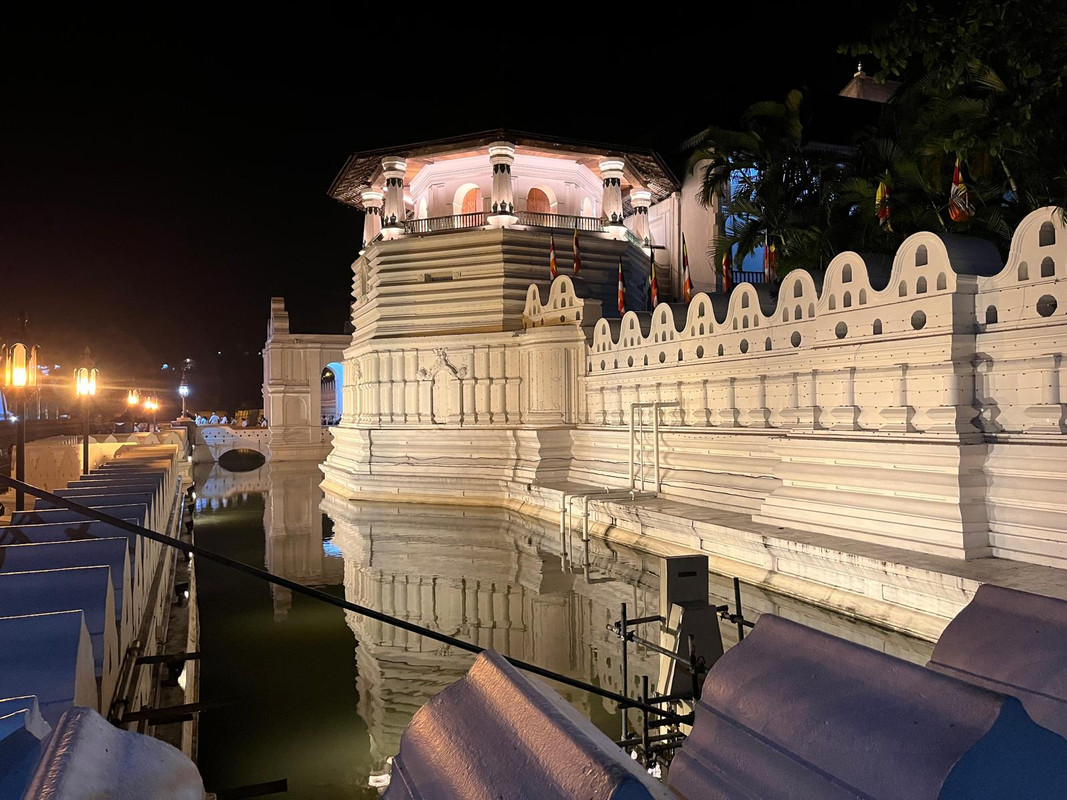Sri Lanka's Cultural Triangle is the island's historical and cultural heartland, containing no less than five UNESCO World Heritage Sites within its three corners. Spanning from the ancient capital of Anuradhapura in the north, to Polonnaruwa in the east, and Kandy in the south, this triangular region is home to remarkable archaeological treasures that showcase over 2,500 years of Sri Lankan civilization. For history enthusiasts, cultural explorers, and spiritual seekers, the Cultural Triangle offers an immersive journey into the island's rich heritage.
The Cultural Triangle: An Overview
The Cultural Triangle encompasses several key ancient cities, sacred religious sites, and architectural wonders from different periods of Sri Lankan history. The main sites within this region include:
- Anuradhapura - The first ancient capital
- Polonnaruwa - The second ancient capital
- Sigiriya - The ancient rock fortress
- Dambulla - The cave temple complex
- Kandy - The last royal capital and home to the Temple of the Sacred Tooth Relic
- Mihintale - The cradle of Buddhism in Sri Lanka
- Ritigala - Ancient monastery ruins
- Aluvihara - Rock temple where the Buddhist scriptures were first written down
These sites collectively tell the story of Sri Lanka's ancient kingdoms, the arrival and evolution of Buddhism on the island, remarkable engineering achievements, and artistic developments that span many centuries.
Anuradhapura: The First Ancient Capital
Founded in the 4th century BCE, Anuradhapura served as Sri Lanka's first capital for nearly 1,400 years. Today, it's one of the most extensive and important archaeological sites in South Asia.
Key Attractions:
- Sri Maha Bodhi - The sacred Bo Tree grown from a cutting of the tree under which Buddha attained enlightenment, making it the oldest historically documented tree in the world (over 2,200 years old)
- Ruwanwelisaya Stupa - A massive white dagoba (stupa) built by King Dutugemunu in the 2nd century BCE
- Jetavanaramaya - Once one of the tallest structures in the ancient world, this massive brick stupa was the centerpiece of a major monastery
- Abhayagiri Monastery - A vast monastic complex that once housed thousands of monks
- Isurumuniya Temple - Famous for its stone carvings, including the "Lovers" sculpture
- Kuttam Pokuna (Twin Ponds) - Sophisticated bathing tanks that showcase advanced hydraulic engineering
Visitor Tips: The archaeological site is vast, so consider renting bicycles to explore efficiently. Early morning or late afternoon visits help avoid the midday heat. Allow at least a full day to see the major sites.
Polonnaruwa: The Medieval Capital
After Anuradhapura was abandoned following invasions from South India, Polonnaruwa became Sri Lanka's second capital from the 11th to 13th centuries CE. The compact archaeological site offers well-preserved ruins from this medieval period.
Key Attractions:
- Royal Palace Complex - The massive brick walls still stand seven meters high
- Gal Vihara - Four magnificent Buddha statues carved from a single granite wall, representing the pinnacle of Sri Lankan rock carving
- Vatadage - A circular relic house with elaborate stone carvings
- Lankathilaka Temple - Impressive brick temple with a colossal standing Buddha
- Shiva Devale No. 2 - One of the oldest structures in Polonnaruwa, built entirely of stone in the South Indian style
- Parakrama Samudra - A vast man-made reservoir that still irrigates the surrounding countryside
Visitor Tips: The Polonnaruwa Museum provides excellent context before exploring the ruins. The site is more compact than Anuradhapura and can be comfortably explored in one day. Bicycle rental is available and recommended.
Sigiriya: The Lion Rock Fortress
Perhaps Sri Lanka's most dramatic and iconic site, Sigiriya is a 200-meter-high rock fortress built by King Kassapa I (477-495 CE) as his new capital. This architectural and engineering marvel combines urban planning, water gardens, frescoes, and innovative construction techniques.
Key Attractions:
- Water Gardens - Sophisticated hydraulic systems that still function during rainy seasons
- Frescoes - Ancient paintings of female figures (often called "cloud maidens") preserved in a sheltered pocket of the rock
- Mirror Wall - A highly polished wall where visitors from 1,000 years ago left graffiti poems and comments
- Lion's Paws - Massive carved lion's paws that once formed the entrance to the final stairway (the head and upper portion have collapsed)
- Summit - The ruins of the palace complex with panoramic views of the surrounding landscape
Visitor Tips: Arrive early (opening time is 7 AM) to avoid both crowds and heat for the climb. The ascent involves about 1,200 steps and can be strenuous but is manageable for those with reasonable fitness. Guides are recommended to explain the historical and archaeological significance of different sections.
Dambulla Cave Temple Complex
The largest and best-preserved cave temple complex in Sri Lanka, Dambulla has been a sacred pilgrimage site for 22 centuries. The five caves contain 157 statues of Buddha and Hindu deities, and stunning ceiling frescoes covering 2,100 square meters.
Key Attractions:
- Cave 1 (Devaraja Viharaya) - Features a 14-meter-long reclining Buddha
- Cave 2 (Maharaja Viharaya) - The largest and most impressive cave, with 16 standing and 40 seated Buddha statues
- Cave 3 (Maha Alut Viharaya) - Built by King Kirti Sri Rajasinghe in the 18th century
- Cave 4 (Pachima Viharaya) - Contains many seated Buddha images
- Cave 5 (Devana Alut Viharaya) - The newest cave with a reclining Buddha
Visitor Tips: Remove shoes before entering the caves as this is an active place of worship. Photography is permitted but without flash. The climb to the caves is moderately steep but has clear steps and takes about 15-20 minutes.
Kandy: The Last Royal Capital
Kandy was the last capital of the Sri Lankan kings before the British colonial period and is home to the Temple of the Sacred Tooth Relic, the most venerated Buddhist site in Sri Lanka. The city's cultural significance earned it UNESCO World Heritage status.
Key Attractions:
- Temple of the Sacred Tooth Relic (Sri Dalada Maligawa) - Houses a tooth relic of the Buddha and is the site of the annual Esala Perahera festival
- Kandy Lake - A picturesque artificial lake built in 1807 by the last Sinhalese king
- Royal Palace Complex - Now houses the National Museum of Kandy
- Audience Hall - An ornate wooden pavilion where the king would meet his ministers and foreign dignitaries
- Peradeniya Royal Botanical Gardens - Located a few kilometers outside the city, these magnificent gardens were once reserved for Kandyan royalty
Visitor Tips: The Temple of the Sacred Tooth Relic has specific opening hours for viewing the shrine room. Dress modestly with shoulders and knees covered. If possible, plan your visit during the Esala Perahera festival (usually in July/August) to witness one of Asia's most spectacular processions.
Lesser-Known Cultural Triangle Sites
Beyond the major attractions, the Cultural Triangle contains several remarkable sites that receive fewer visitors but offer deep historical and spiritual significance:
Mihintale
Located 12km east of Anuradhapura, Mihintale is revered as the cradle of Buddhism in Sri Lanka. It was here in 247 BCE that the Buddhist monk Mahinda (son of Emperor Ashoka of India) met King Devanampiyatissa and converted him to Buddhism, changing the course of Sri Lankan history. The site features monastic ruins, rock inscriptions, and several dagobas spread across a hillside.
Ritigala
Hidden in a strict nature reserve, Ritigala contains the ruins of an ancient Buddhist monastery dating back to the 1st century BCE. Unlike other monastic complexes, Ritigala is austere with minimal decorative elements, reflecting the ascetic lifestyle of its former forest-dwelling monks. Stone bridges, meditation pathways, and uniquely designed stone-cut bathing tanks make this a fascinating visit.
Aluvihara Rock Temple
Near Matale on the road to Kandy, this rock temple is historically significant as the place where the Buddhist scriptures (Tripitaka) were first written down in the 1st century BCE, previously having been preserved through oral tradition. The small caves contain Buddha images and colorful (though sometimes graphic) paintings depicting Buddhist hell realms.
Avukana Buddha Statue
Located near Kekirawa, this standing Buddha statue carved from a single granite rock stands 12 meters tall and dates from the 5th century. It's considered one of the finest examples of standing Buddha statues in Sri Lanka.
Practical Information for Exploring the Cultural Triangle
Getting Around
The Cultural Triangle covers a significant area, and the distances between major sites can be substantial:
- Private driver/guide - The most convenient option, allowing flexible scheduling
- Public buses - Connect all major towns but can be crowded and time-consuming
- Train - Limited service to Anuradhapura and Polonnaruwa from Colombo
- Tuk-tuks - Good for local exploration once you've reached a base town
Where to Stay
Strategic bases for exploring the Cultural Triangle include:
- Anuradhapura - For exploring the ancient city and Mihintale
- Habarana or Sigiriya - Central locations for accessing Sigiriya, Polonnaruwa, and Dambulla
- Kandy - For the southern corner of the triangle
Accommodation ranges from budget guesthouses to luxury hotels, with some particularly atmospheric heritage properties available.
Cultural Etiquette
When visiting religious sites within the Cultural Triangle:
- Dress modestly, covering shoulders and knees
- Remove shoes and hats before entering temples
- Never pose with your back to Buddha images
- Ask permission before photographing monks or nuns
- Speak quietly and behave respectfully
Best Time to Visit
The Cultural Triangle lies in Sri Lanka's dry zone, making it visitable year-round, though certain seasons offer advantages:
- December to March - Peak tourist season with the best weather
- April to September - Hotter but fewer crowds
- October to November - Some rain possible but sites are lush and green
Early morning and late afternoon visits are recommended to avoid midday heat.
Conclusion: A Journey Through Time
Sri Lanka's Cultural Triangle offers visitors a remarkable journey through the island's ancient history and spiritual heritage. The archaeological sites reveal sophisticated urban planning, advanced hydraulic engineering, masterful artistry, and profound religious devotion that characterized Sri Lankan civilization for over two millennia. Whether you're clambering up Sigiriya's rock face, standing in awe before massive stupas in Anuradhapura, admiring the stone carvings at Polonnaruwa, or joining Buddhist pilgrims at Kandy's Temple of the Sacred Tooth Relic, the Cultural Triangle provides an unforgettable window into Sri Lanka's rich past.
For travelers interested in history, archaeology, art, or spiritual heritage, this region deserves at least 4-5 days of exploration to fully appreciate its treasures. Even those with limited time should try to include at least one or two of these remarkable UNESCO World Heritage Sites in their Sri Lankan itinerary, as they truly represent the soul of this ancient island nation.


